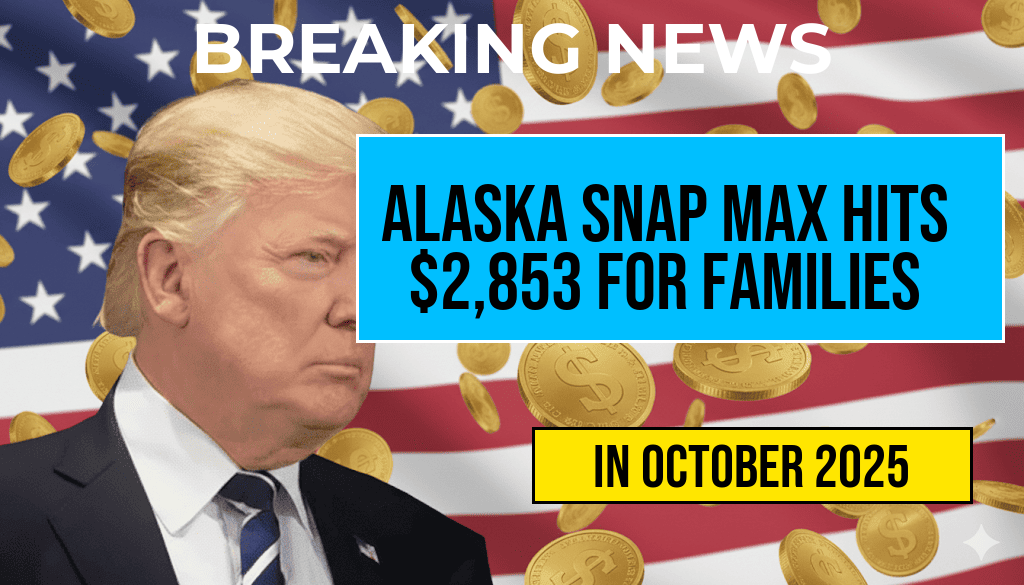Alaska’s Supplemental Nutrition Assistance Program (SNAP) recently announced that families of six can receive a maximum monthly benefit of $2,853, a stark contrast to the $1,421 available to similar families in the contiguous United States. This significant difference underscores the unique economic challenges faced by Alaskan families, where the cost of living is notably higher than in many other regions of the country. The increased SNAP benefits are designed to help families cope with rising food prices and other living expenses, which have been exacerbated by supply chain issues and inflation. Understanding the rationale behind these figures sheds light on the broader implications for food security and economic stability in Alaska compared to the Lower 48 states.
Understanding SNAP Benefits in Alaska
The SNAP program aims to provide nutritional assistance to low-income families. Each state’s benefits are calculated based on various factors, including local cost of living, family size, and federal guidelines. Alaska’s inflated maximum benefits reflect the state’s higher food prices, which are driven by factors such as transportation costs and limited local agricultural production.
Cost of Living in Alaska
- Transportation Costs: Due to its geographical location and vast wilderness, transporting goods to Alaska can be significantly more expensive.
- Limited Agricultural Production: The state has a shorter growing season and fewer farms, leading to higher prices for fresh produce.
- Remote Living Conditions: Many rural communities lack easy access to grocery stores, leading to increased prices due to demand and supply challenges.
A Comparison of SNAP Benefits
| Family Size | Alaska SNAP Maximum | Lower 48 SNAP Maximum |
|---|---|---|
| Family of 6 | $2,853 | $1,421 |
The table above highlights the stark contrast in SNAP benefits offered to families of six in Alaska versus those in the Lower 48. While the federal government sets baseline benefit levels, states have the flexibility to adjust these amounts based on local needs. Alaska’s decision to provide more substantial support reflects an understanding of the unique economic landscape faced by its residents.
The Impact of Inflation
Inflation has posed significant challenges across the United States, but its effects are felt acutely in Alaska. Rising costs for essential goods, particularly food, have made it increasingly difficult for families to maintain proper nutrition. According to the U.S. Bureau of Labor Statistics, food prices in Alaska rose by 15% over the past year, highlighting the urgent need for increased SNAP benefits in the state. Families relying on SNAP assistance often find themselves struggling to stretch their monthly benefits to cover all necessary expenses.
Food Security Challenges
The disparity in SNAP benefits contributes to broader food security issues in Alaska. A recent report from the Feeding America indicates that food insecurity rates in Alaska are among the highest in the nation, with many families facing tough choices between purchasing groceries and paying for other essential bills.
Community Responses
In response to the ongoing crisis, local organizations and community groups are mobilizing to support families in need. Initiatives include food drives, community gardens, and educational programs aimed at improving nutrition and cooking skills. These grassroots efforts play a crucial role in complementing government assistance and addressing the immediate needs of vulnerable populations.
Conclusion
The significant difference between SNAP benefits in Alaska and the Lower 48 states underscores the unique economic challenges faced by Alaskan families. As the cost of living continues to rise, the state’s decision to offer higher benefits aims to alleviate some of the burden on families struggling to secure adequate nutrition. Ongoing efforts at both the governmental and community levels will be essential to ensure food security and support for all Alaskans.
Frequently Asked Questions
What is the maximum SNAP benefit for families of six in Alaska?
The maximum SNAP benefit for families of six in Alaska has reached $2,853, which is significantly higher than the benefits available in the lower 48 states.
How do SNAP benefits in Alaska compare to those in the lower 48 states?
In the lower 48 states, the maximum SNAP benefit for families of six is about $1,421, which is considerably lower than Alaska’s benefits, making it challenging for families to meet their nutritional needs.
Why are SNAP benefits higher in Alaska?
SNAP benefits are higher in Alaska due to the state’s unique cost of living, including higher prices for food and other essential goods, which necessitates increased assistance for families.
How does the cost of living affect SNAP benefits in Alaska?
The high cost of living in Alaska directly influences SNAP benefits, as the program aims to provide adequate support based on local prices, ensuring families can afford nutritious food despite the economic challenges.
What should families in the lower 48 know about SNAP benefits?
Families in the lower 48 should be aware that SNAP benefits are often insufficient to cover basic needs, and they may need to seek additional resources or assistance programs to help with food security.






